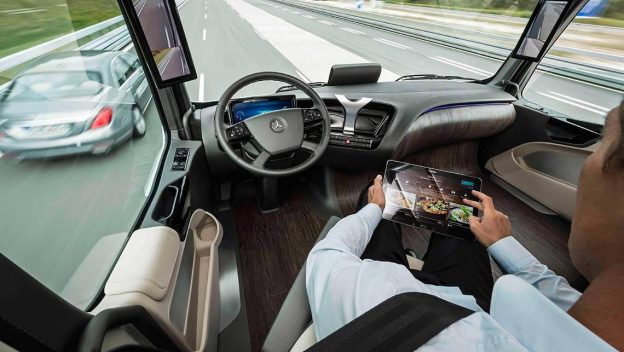Please Fasten Your Seat Belts! Ladies, Gentlemen, and Hal.
I was snapped into awareness, as I digested the following numbers
Let me interpret this in a different way, you could take a driver-less taxi to and from work all week for what it costs you in a single trip today.
Do I think driver-less vehicles are set to disrupt and reshape the way we live? You bet I do.
The Impact of Driver-Less Vehicles in the Logistic Industry
The supply chain industry is advancing at tremendously high speed, are you able to adapt to new changes fast enough, and adopt the contemporary trends should you want to stay afloat.
At the Imagine the Supply Chain of 2030 Global Summit, the keynote address on “Embracing the Autonomous Supply Chain and Rethinking Innovation” resonates with my view about the future. The Age of Autonomous vehicle is emerging, and it is disruptive. The economic and social impact is huge, and beyond the scope of this article. Industries are affected or will be affected. Whether it will be good or bad is yet to be seen.
In recent news, “Tesla to enter the semi truck business, starting with ‘Tesla Semi’ set to be unveiled next year”
“Uber acquired self-driving lorry startup Otto this summer in a deal worth up to $680 million and it plans to put the company to work next year.”
“Otto’s technology allows existing trucks to be ‘retrofitted’ with self-driving technology which can handle driving on U.S. highways. It doesn’t entirely automate the process since human drivers are needed to negotiating coming on and off highways, but the technology may enable drivers to rest more and make their deliveries faster in the future.”
Although the technology remains under development, the first attempts already being tested out. It might not be long before we start getting our deliveries from a vehicle without a driver. Are you prepared to adapt to new changes fast enough, and has the ability to adopt the contemporary trends should you want to stay afloat. Is it time to start thinking about a new business model?
Key Benefits of Driver-Less Vehicles
In 2014, DHL Trend Research has launched a report on “Self-Driving Vehicles in Logistics”, which provides DHL’s perspective on implications, highlighting the key elements and the potential of autonomous technologies.
A few key benefits from autonomous driving outlined by the report:
Improved Safety: Minimize human error to reduce road traffic accident.
Higher Efficiency: Traffic flows faster with vehicle to vehicle communication. Freight trucks will be able to travel 24/7 without requiring driver rest time.
Lower Environmental Impact: With fewer vehicles on the road and more efficient fuel consumption, autonomous systems are programmed to minimize environmental impact.
Greater comfort: The driver becomes a passenger. He or she doesn’t have to watch the road ahead but can rest and enjoy other activities.
According to the report, “It’s the next evolutionary step to start applying this technology to outside premises and on public streets. Beyond warehousing operations, analysts expect many more applications in future along the entire supply chain, particularly in outdoor logistics operations, line haul transportation, and last-mile delivery (DHL Trend Research, 2014)”.
However, as the report explains, autonomous technologies still have some way to go before reaching full maturity. Considerable catching up is also required regarding regulations, public acceptance, and issues of liability. Despite these barriers, some compelling use cases have already emerged, clearly indicating that many organizations are willing to develop and deploy self-driving technologies.
OK, SO what does this mean for us?
As far as I can see the immediate impact for many of my clients will be the need to reassess their network design. I wouldn’t be advocating taking long term leases on Distribution centers (DCs) or setting up chains of highway diners. As driverless trucks come on line, the cost balance will shift to more frequent deliveries and less double handling. This may well trigger a revitalization of manufacturing hubs, with individual plants being able to economically service much larger catchments, without a complex and costly distributed warehouse network.
What’s Next?
Supply chain leaders should always embrace innovation and be prepared. We all understand the importance of having robust and evolvable systems that can be easily adapted to accommodate any future disruptions. The question is what you are planning to do about it today.
What are your thoughts on this? Any comments gladly appreciated.
Tim Gray
Reference
Self-Driving Vehicles – The road to the future? (2014, DHL Trend Research): http://www.dhl.com/en/about_us/logistics_insights/dhl_trend_research/self_driving_vehicles.html
Uber Wants Your Long Haul Trucking Business (2016, September):http://www.supplychain247.com/article/uber_wants_your_long_haul_trucking_business/Autonomous_Vehicles
Proudly Brewed. Self-Driven (2016, October):https://blog.ot.to/proudly-brewed-self-driven-95268c520ba4#.jlia9f2s8






